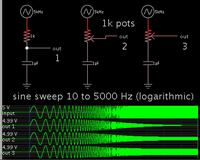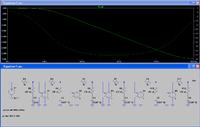Ibtissam Aziz
Newbie level 4
Hello,
I studied filter design, I know usual canonical forms to express 1st and 2nd order filter.
These forms lead us to -20/-40dB per decade. I was wondering how to design filters that aren't -20/-40..etc dB/dec.
Is there other mathematical tools to do it ? I found schematics and tryed to compute transfert function and I couldn't make the identification to canonical form.
Thanks for any help :smile:
I studied filter design, I know usual canonical forms to express 1st and 2nd order filter.
These forms lead us to -20/-40dB per decade. I was wondering how to design filters that aren't -20/-40..etc dB/dec.
Is there other mathematical tools to do it ? I found schematics and tryed to compute transfert function and I couldn't make the identification to canonical form.
Thanks for any help :smile:

